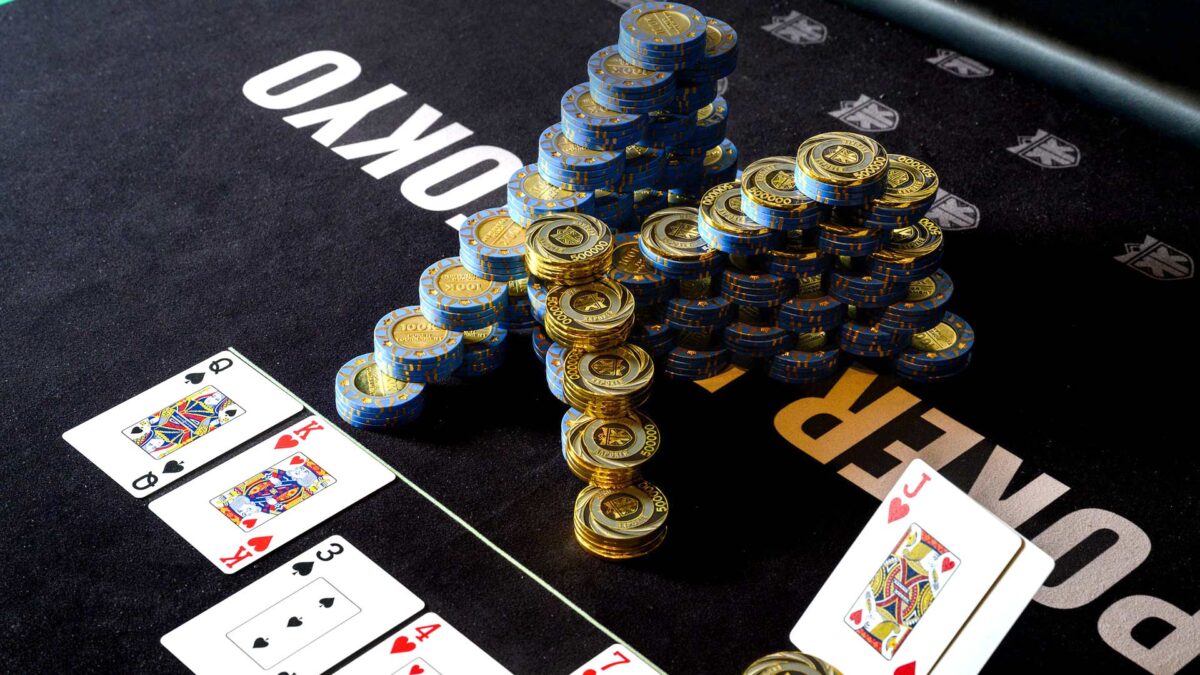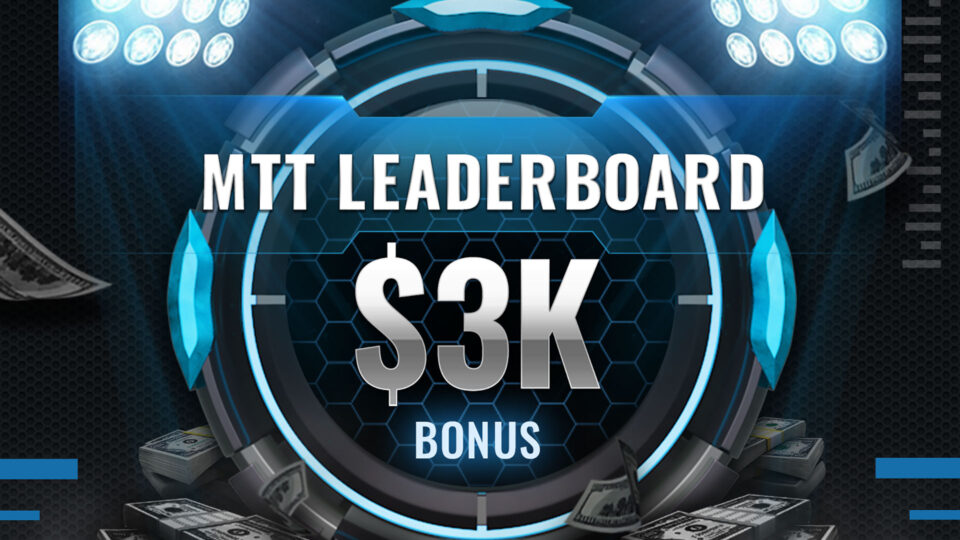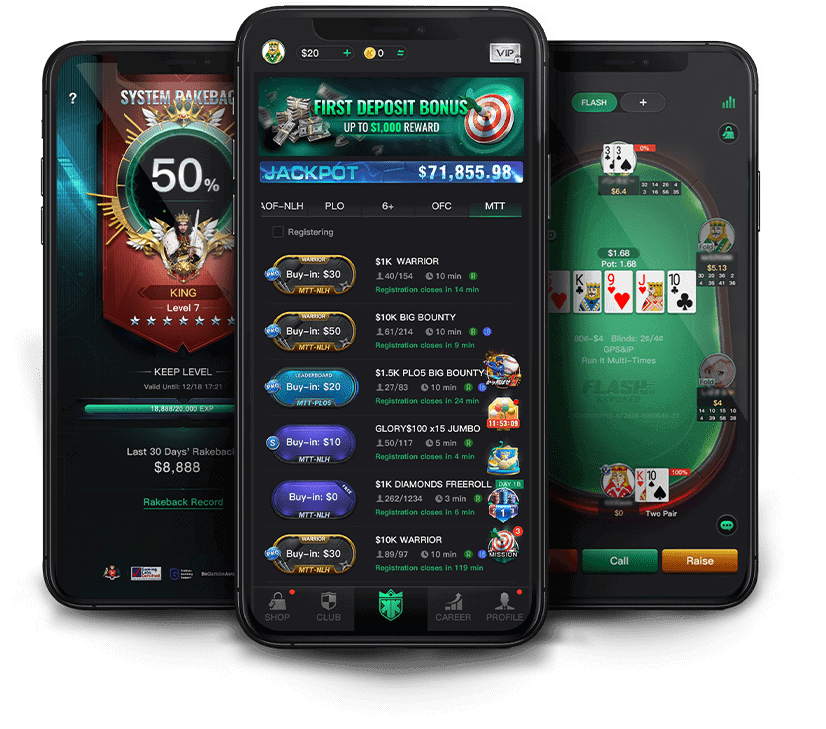No-Limit Texas Hold’em (NLH)
2023-03-24

HOW TO PLAY TEXAS HOLD’EM POKER: RULES, HAND RANKINGS, AND STRATEGY
Are you interested in diving into the exciting world of Texas Hold’em poker? Understanding the rules and strategies is simpler than you might think. Whether you aim to become an online poker pro, thrive in live poker games, or set up friendly matches with friends, this guide will walk you through the ins and outs of playing poker effectively.
Learn how to play Texas Hold’em poker step by step. Understand the NLH rules, hand rankings, table positions, and essential strategies below to elevate your poker game. Let’s get started!
BASIC TEXAS HOLD’EM POKER RULES
In Texas Hold’em poker, each participant receives two face-down cards called Hole Cards. These cards are drawn from a standard 52-card deck ranging from 2 to Ace. The weakest hole cards are 7-2, while the strongest are two aces (A-A), often called Pocket Aces.
The game revolves around the communal use of 5 cards that form the board: the Flop (first 3 cards), the Turn (4th card), and the River (5th card). The objective is to create the best possible 5-card poker hand by combining your hole cards with the community cards.
Betting occurs in 4 rounds:
- After hole cards are dealt. Also known as Pre-flop.
- After the Flop cards are revealed. Also known as Post-flop.
- After the Turn card is revealed.
- After the River card is revealed.
In each betting round, a player may have the option to check, fold, call, or raise, depending on previous actions and bets made.
Poker Actions
Check – passes the action to the next player. Check can only be done if no bets have been made in the current betting round.
Call – If a player has bet before your action turn, you may call their bet amount and remain in the hand.
Raise – If a player has bet before your action turn, you may raise their bet amount.
Fold – If a player has bet before your action turn, you may fold and exit from the hand, sacrificing any chips you have previously put into the pot.
HAND RANKINGS

- Royal Flush (Ten to Ace of the same suit)
- Straight Flush (Consecutive sequence of the same suit)
- Four of a Kind (4 cards of the same rank)
- Full House (Combination of 3 of a kind and a pair)
- Flush (5 cards of the same suit)
- Straight (Consecutive sequence of any suit)
- Three of a Kind (3 cards of the same rank)
- Two Pair (2 pairs of the same rank)
- One Pair (2 cards of the same rank)
TABLE POSITIONS
Each position at the poker table plays an essential role in each hand, so it is a must-know!
For example, some positions must place mandatory bets in the first betting round (pre-flop), and each position determines the action order.
Poker table positions are also crucial for game strategy, such as opening poker hand ranges and reading an opponent.
Learn more detailed information on poker hand range strategy here.
- Small Blind: Places a mandatory bet (half of the Big Blind amount).
- Big Blind: Places a bet equal to the mandatory Big Blind amount. Last to act after all the hole cards are dealt.
- Under the Gun (Early Position): First to act after all hole cards are dealt.
- Under the Gun+1 (Early Position)
- Middle Position
- Lojack
- Hijack
- Cutoff
- Button: Last to receive Hole cards. (Also known as Dealer position or Late position.)
HAND EXAMPLE
LEVEL 1 – 25/50
Small Blind bets a mandatory amount of 25.
Big Blind bets a mandatory amount of 50.
Hole cards are dealt to all players.
The ‘Under the Gun’ player then acts first, followed by subsequent players.
Tip: Remember, the Big Blind position acts last in the pre-flop betting round.
If multiple players remain at the conclusion of the pre-flop betting round, the Flop is revealed, which are the first 3 communtity cards.
The second betting round (Post-Flop) starts with the first active player to the left of the Button. They can check, bet, or fold. Subsequent players have the same options, as well as the option to raise, if a bet was made.
Remember:
Check – passes the action to the next active player on their left, and can only be done if no bet has already been placed in the current betting round.
Bet – the first bet in any betting round must be equal to, or greater than, the value of the current Big Blind amount.
Fold – this action is allowed, but Check should be used if an opponent has not yet bet.
Pre-flop Betting Round
Suppose all players have so far folded their hole cards in the first betting round (Pre-flop) before the Button raises to 100 chips. The Small Blind player decides to call the 100 bet, as does the Big Blind player.
Flop Betting Round
In live poker, the top card from the deck is discarded (also known as the Burn card) before the first 3 community cards (Flop) are revealed.
The Small Blind player, on the left of the Button position, is first to act and chooses to check.
The Big Blind player also opts to check.
The Button player places a minimum bet of 50 chips (equal to the current the level’s current Big Blind amount).
The Small Blind player has the options to call, raise, or fold. They opt to fold. Similarly, the Big Blind player has those choices and chooses to call the 50 bet.
Tip: In this example, the Button player has ‘position’ on the Small Blind and Big Blind players. This means they will always get to act after their opponents in each betting round. Having position on opponents is an important consideration in poker.
Turn Betting Round
The deck’s top card is once again burned, and the next card is placed face up on the board, revealing the Turn. At this point, there are 4 community cards visible.
Because the Small Blind player folded in the previously betting round, the Big Blind player is now first to act, and decides to check.
The Button player bets 100 chips, and the Big Blind player calls the bet.
River Betting Round
The deck’s top card is once again burned, and the next card is placed face up on the board, revealing the River. At this point, all 5 community cards are now visible.
With all 5 community cards now exposed, each player is aware of their own best five-card hand ranking based on their hole cards and the community cards.
The Big Blind player has the choice to check, bet, or fold, and they chose to check.
The Button player has the option to check and proceed to the showdown, where the player with the best hand wins the pot. Alternatively, they can bet and pass the decision back to their opponent. The Button player decides to bet 200 chips, and the Big Blind player calls. All betting is concluded at this point.
The Button player, who was the last to make an aggressive action (betting), is the first to reveal their hand. If the Big Blind player holds a stronger hand, they must show it to win the pot. If not, they can muck their cards, indicating they concede, and the Button player wins the pot.
The Texas Hold’em poker hand concludes, and all positions rotate clockwise by one. Consequently, the Under the Gun player from the previous hand becomes the Big Blind, the Big Blind player becomes the Small Blind, the Small Blind player becomes the Button, and so forth.
Conclusion: Mastering Texas Hold’em poker requires a blend of rules comprehension and strategic finesse. As you refine your strategy and adapt to various opponents, you’ll improve and enjoy the game even more. Check out our detailed blog for an in-depth exploration of poker strategies and opening hand ranges.
MUST KNOW POKER FACTS & TERMS
Did Poker Come From Texas?
It might sound quite obvious that Texas Hold’em Poker did in fact originate from the US state, when locals would play the game back in the early 1900s. But the game is known to have originated much before in various formats, and used to be played with only 20 cards!
Where is the biggest live poker tournament?
Las Vegas is known as the ‘home’ of poker due to its many casinos. The World Series of Poker (WSOP) occurs annually in Las Vegas during the summer months, lasting approximately 7 weeks, and offers the largest selection of live poker tournaments as players compete for gold bracelets and cash prizes.
What is Poker Slang Terms?
Poker has a huge variety of terms and slang, it is almost like another language. Here are some must-know poker terms:
BUTTON: another term for the Dealer position.
HEADS-UP: When only 2 players are in the pot. ‘The pot is now heads-up’, ‘We are playing heads-up’
BAD BEAT: When a lower ranking hand improves to beat a higher ranking hand. ‘I had a straight on the Turn, but they improved to a Flush on the River! What a bad beat!’
TILT: When a player’s mental / emotional state turns negative because of a Bad Beat or run of bad hands or bad luck. ‘I’m on tilt’
STRADDLE: Used in cash games, a term for a blind raise to double the Big Blind by the Under the Gun player before hole cards are dealt.
BUBBLE: The stage of a tournament right before the payout places. Normally when only one more player needs to be eliminated. Can also be used to describe the final person who did not win a prize in the tournament, known as the ‘bubble boy’, ‘bubble girl’.
TELL: A physical reaction by a player. Normally reveals the identity of their hand. ‘He has a tell. He scratches his eye when he is bluffing’
POCKET ROCKETS: Slang term for Pocket Aces. (AA hole cards)
COWBOYS: Slang term for Pocket Kings. (KK hole cards)
Join KKPoker, improve your poker skills, and win fantastic cash prizes and rewards in our cash games, tournaments, and SPINUP, with a $1,000,000 jackpot prize pool!
Download the KKPoker app and play anywhere, anytime, in a fun and recreational poker player-focused environment! We even have FREE buy-in tournaments every day to boost your poker bankroll! Join now and get great welcome rewards, plus 5% Instant Rakeback from day one and the chance to earn up to 50% rakeback.
Be a part of our poker community and follow the KKPoker journey on Instagram, Facebook, X and Twitch.
Copyright © 2025 KKPoker. All Rights Reserved
Copyright © 2025 KKPoker. All Rights Reserved






















